The Bloomsbury, an architectural landmark, offers literary thrills and tranquility in the heart of stylish intellectual London.
The culture-rich London neighborhood of Bloomsbury has emerged as a secret find for those in search of a quiet but very central location. And it now offers an elegant new place to stay. The Bloomsbury hotel recently opened in an historic landmark building originally designed in the twenties by the revered English architect, Sir Edward Lutyens.
Surrounded by leafy garden squares and elegant classical Georgian townhouses, the handsome Bloomsbury has a handsome brick exterior, a sense of London history, and a colorful, fresh and comfortably indulgent style.
The Bloomsbury’s Edward Lutyens’ grand architecture superbly reflects the refined classical architecture of the neighborhood, with a columned entrance. And a series of tall and ultra-symmetrical windows create a harmonious effect to the exterior.
Lutyens originally designed The Bloomsbury building with the patronage of the Duchess of York, as the Central Club, a residence for county ladies residing in London. The exterior was modeled on Queen Mary’s doll’s house - which Lutyens himself designed for the monarch.
The Bloomsbury Group—or Bloomsbury Set—was a group of associated English writers, intellectuals, philosophers and artists in the first half of the 20th century, including Virginia Woolf, John Maynard Keynes, E. M. Forster and Lytton Strachey.
At The Bloomsbury Club, a paneled library stocked with London-related leather-bound editions, is a fine place to rest and relax after a day of visiting museums.
Bloomsbury is a location that invites exploration. The British Museum is just a brief walk away, and a twenty-minute stroll leads to the enchanting Wallace Collection private museum in Marylebone. Twenty minutes away, Piccadilly offers Fortnum & Mason and the dramatic galleries of the grand Royal Academy of Arts. There’s the neighborhood of Fitzrovia, and just beyond Oxford Street is Mayfair.
For the literary set, the Bloomsbury neighborhood will always be associated with writers including Virginia Woolf and Lytton Strachey, and artists including Vanessa Bell and Duncan Grant. And the handsome Georgian terrace houses and lovely garden squares of the ‘Bloomsbury set’, as these highly influential intellectuals were known, and a brief walk from the Bloomsbury hotel. The original flight of Portland Stone steps leads guests into the new reception area, an intimate space that includes a beautiful Lutyens-inspired Living Room.
The hotel is like a private home more than a traditional hotel. A color palette of muted greens and pinks is accented with artwork and lighting, as well as the boldly graphic heritage-inspired botanical wallpaper. A Lutyens designed fireplace provides a focal point to the space.
Mindful of the original Lutyens design and the building’s listed status, this bar area has been sensitively reimagined. The original paneled walls were retained and given a high-gloss lacquer finish in vivid coral – a color that Lutyens was fond of. A striking feature of the new interior is the five bespoke Murano glass chandeliers, which were specially created for the space.
British illustrator Luke Edward Hall was commissioned to create 36 original pieces of art inspired by the surrounding Bloomsbury area and the architecture of Lutyens. The bar itself features a Calacatta marble top with a high-gloss molded timber front, and the back bar features antique mirror and brass detailing, to reflect the iconic heritage of the hotel and building.
I also recommend walking over to Lambs Conduit Street to find Pentreath & Hall design shop. Decorator Ben Pentreath is avidly followed on Instagram and is said to have advised the Duchess of Cambridge on decorating Anmer Hall, the family’s country estate in Norfolk.
And at 10 Curzon Street, there’s my favorite London hangout, Heywood Hill bookstore (owned by the Duke of Devonshire)…where you might run into the duke himself, or Nicholas Haslam or various lords and ladies picking up books on hunting or wine or even delights by Nancy Mitford. The lovely men and women working at their desks here are ready to recommend the newest books of delight. And sign up for their ‘year of books’ packages. The best.
Newest on a chic corner of Mount Street (where Erdem has his art-filled boutique) is Pasticceria Marchesi 1824, the first London outpost of the classic Milanese pastry/cake/sweets/coffee restaurant/ bakery. Exquisite little fruit tarts and chocolates and pretty gold-embossed cakes are all displayed like the crown jewels. Mount Street is the chic street of the moment, with highlights including Christian Louboutin.
And a must visit is the Wallace Collection on Manchester Square. Currently, through September 1, there is a delightful exhibit curated by Manolo Blahnik, in which he pairs his ‘haute couture’ shoes with paintings by Gainsborough, Hals, Greuze, Velasquez, Reynolds and Landseer and others. This is an exceptional museum for art and design lovers. It’s usually quiet…and it’s free. Highly recommended. There’s also a stylish restaurant in the central courtyard.
Then of course walk back to The Bloomsbury for drinks at the Coral Bar or afternoon tea on Dalloway Terrace. Home away from home, indeed.
Credits:
The Bloomsbury
thedoylecollection.com/hotels/the-bloomsbury-hotel
The Coral Room
The culture-rich London neighborhood of Bloomsbury has emerged as a secret find for those in search of a quiet but very central location. And it now offers an elegant new place to stay. The Bloomsbury hotel recently opened in an historic landmark building originally designed in the twenties by the revered English architect, Sir Edward Lutyens.
Surrounded by leafy garden squares and elegant classical Georgian townhouses, the handsome Bloomsbury has a handsome brick exterior, a sense of London history, and a colorful, fresh and comfortably indulgent style.
The Bloomsbury’s Edward Lutyens’ grand architecture superbly reflects the refined classical architecture of the neighborhood, with a columned entrance. And a series of tall and ultra-symmetrical windows create a harmonious effect to the exterior.
Lutyens originally designed The Bloomsbury building with the patronage of the Duchess of York, as the Central Club, a residence for county ladies residing in London. The exterior was modeled on Queen Mary’s doll’s house - which Lutyens himself designed for the monarch.
Rooms have a comfortable residential feeling—more like a private apartment and each individual.
The Bloomsbury’s new interiors were created with great style by Martin Brudnizki Design Studio, the internationally acclaimed interior architecture and design studio firm. The Studio has a reputation for creating interiors including The Beekman in New York, The Ivy, Soho Beach House Miami and Scott’s.
The Bloomsbury has put on the razzle-dazzle with designer Martin Brudnizki’s Coral Room. Known for his maximalist interiors, Brudnizki has pulled out all the stops. The grand double-height room is warmed with lacquered coral pink walls and lit by a series of bold handcrafted Murano chandeliers.
The Bloomsbury’s new interiors were created with great style by Martin Brudnizki Design Studio, the internationally acclaimed interior architecture and design studio firm. The Studio has a reputation for creating interiors including The Beekman in New York, The Ivy, Soho Beach House Miami and Scott’s.
The Bloomsbury has put on the razzle-dazzle with designer Martin Brudnizki’s Coral Room. Known for his maximalist interiors, Brudnizki has pulled out all the stops. The grand double-height room is warmed with lacquered coral pink walls and lit by a series of bold handcrafted Murano chandeliers.
The Bloomsbury Group—or Bloomsbury Set—was a group of associated English writers, intellectuals, philosophers and artists in the first half of the 20th century, including Virginia Woolf, John Maynard Keynes, E. M. Forster and Lytton Strachey.
At The Bloomsbury Club, a paneled library stocked with London-related leather-bound editions, is a fine place to rest and relax after a day of visiting museums.
Bloomsbury is a location that invites exploration. The British Museum is just a brief walk away, and a twenty-minute stroll leads to the enchanting Wallace Collection private museum in Marylebone. Twenty minutes away, Piccadilly offers Fortnum & Mason and the dramatic galleries of the grand Royal Academy of Arts. There’s the neighborhood of Fitzrovia, and just beyond Oxford Street is Mayfair.
The Bloomsbury Hotel Architect Sir Edwin Lutyens
The Bloomsbury was designed in 1928 by Sir Edwin Lutyens, the greatest British architect of his time. His notable works stretch from the northeast English island of Lindisfarne to the Indian capital, New Delhi. The hotel building, on Great Russell Street, is lauded as his finest neo-Georgian building and was built as the Central Club for county ladies residing in London.For the literary set, the Bloomsbury neighborhood will always be associated with writers including Virginia Woolf and Lytton Strachey, and artists including Vanessa Bell and Duncan Grant. And the handsome Georgian terrace houses and lovely garden squares of the ‘Bloomsbury set’, as these highly influential intellectuals were known, and a brief walk from the Bloomsbury hotel. The original flight of Portland Stone steps leads guests into the new reception area, an intimate space that includes a beautiful Lutyens-inspired Living Room.
The hotel is like a private home more than a traditional hotel. A color palette of muted greens and pinks is accented with artwork and lighting, as well as the boldly graphic heritage-inspired botanical wallpaper. A Lutyens designed fireplace provides a focal point to the space.
Design Notes
The Coral Room is located within a 2,100-sq. ft. double height space at the front of the hotel.Mindful of the original Lutyens design and the building’s listed status, this bar area has been sensitively reimagined. The original paneled walls were retained and given a high-gloss lacquer finish in vivid coral – a color that Lutyens was fond of. A striking feature of the new interior is the five bespoke Murano glass chandeliers, which were specially created for the space.
British illustrator Luke Edward Hall was commissioned to create 36 original pieces of art inspired by the surrounding Bloomsbury area and the architecture of Lutyens. The bar itself features a Calacatta marble top with a high-gloss molded timber front, and the back bar features antique mirror and brass detailing, to reflect the iconic heritage of the hotel and building.
Dalloway Terrace
Dalloway Terrace quickly became one of London’s most sought after alfresco dining places, serving brunch, lunch, and dinner and afternoon tea. The quintessentially English space, named after the eponymous character created by Virginia Woolf, is an indoor/outdoor restaurant, fully heated in winter, offering the peace and charm of a secluded garden.The Bloomsbury Club
The Bloomsbury Club Bar has a members’ club feeling and is furnished with plush leather armchairs, atmospheric lighting and rich mahogany paneling, taking inspiration from the lives of the famously hedonistic Bloomsbury Set.
The bar leads to a twinkling grotto perfect for lunch or evenings. The drinks menu takes influence from the 1920s and 1930s, with a selection of original cocktails named after literary icons such as: ‘Virginia Woolf’, ‘Leonard Woolf’ and ‘Vanessa Bell’.
The bar leads to a twinkling grotto perfect for lunch or evenings. The drinks menu takes influence from the 1920s and 1930s, with a selection of original cocktails named after literary icons such as: ‘Virginia Woolf’, ‘Leonard Woolf’ and ‘Vanessa Bell’.
Exploring Bloomsbury, Mayfair, Marylebone and My Favorite London Spots
The neighboring British Museum completed a refurbishment, with plans to open three new galleries. An integral part of the renovation is the museum’s Round Reading Room.I also recommend walking over to Lambs Conduit Street to find Pentreath & Hall design shop. Decorator Ben Pentreath is avidly followed on Instagram and is said to have advised the Duchess of Cambridge on decorating Anmer Hall, the family’s country estate in Norfolk.
And at 10 Curzon Street, there’s my favorite London hangout, Heywood Hill bookstore (owned by the Duke of Devonshire)…where you might run into the duke himself, or Nicholas Haslam or various lords and ladies picking up books on hunting or wine or even delights by Nancy Mitford. The lovely men and women working at their desks here are ready to recommend the newest books of delight. And sign up for their ‘year of books’ packages. The best.
Newest on a chic corner of Mount Street (where Erdem has his art-filled boutique) is Pasticceria Marchesi 1824, the first London outpost of the classic Milanese pastry/cake/sweets/coffee restaurant/ bakery. Exquisite little fruit tarts and chocolates and pretty gold-embossed cakes are all displayed like the crown jewels. Mount Street is the chic street of the moment, with highlights including Christian Louboutin.
And a must visit is the Wallace Collection on Manchester Square. Currently, through September 1, there is a delightful exhibit curated by Manolo Blahnik, in which he pairs his ‘haute couture’ shoes with paintings by Gainsborough, Hals, Greuze, Velasquez, Reynolds and Landseer and others. This is an exceptional museum for art and design lovers. It’s usually quiet…and it’s free. Highly recommended. There’s also a stylish restaurant in the central courtyard.
Then of course walk back to The Bloomsbury for drinks at the Coral Bar or afternoon tea on Dalloway Terrace. Home away from home, indeed.
Credits:
Photography courtesy The Doyle Collection/The Bloomsbury
For More Information:
For More Information:
The Bloomsbury
16-22 Great Russell St, Bloomsbury, London
thedoylecollection.com/hotels/the-bloomsbury-hotel
The Coral Room








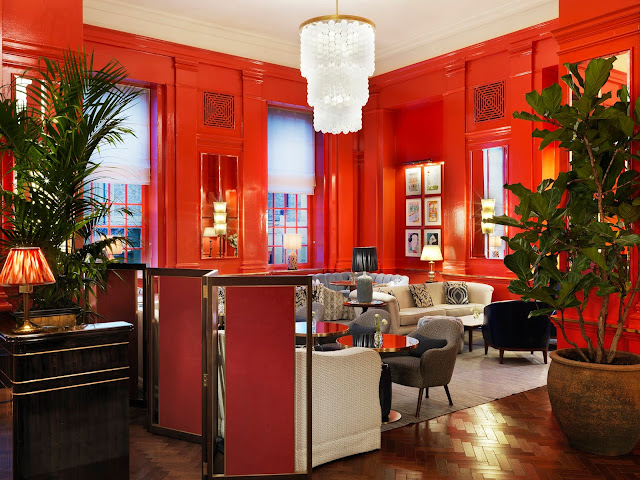







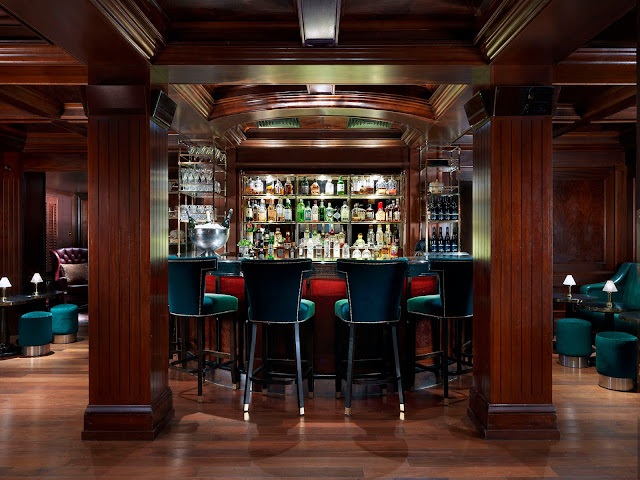

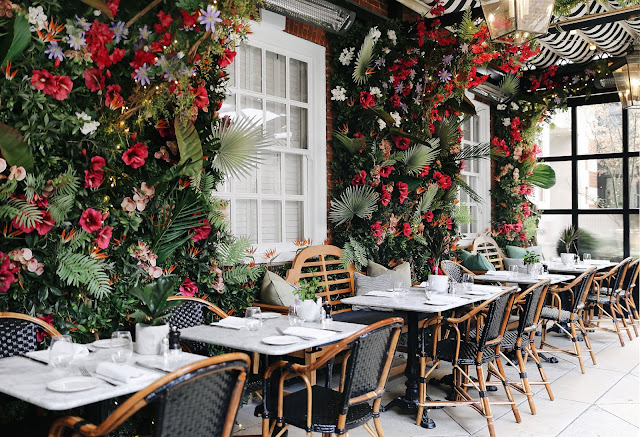


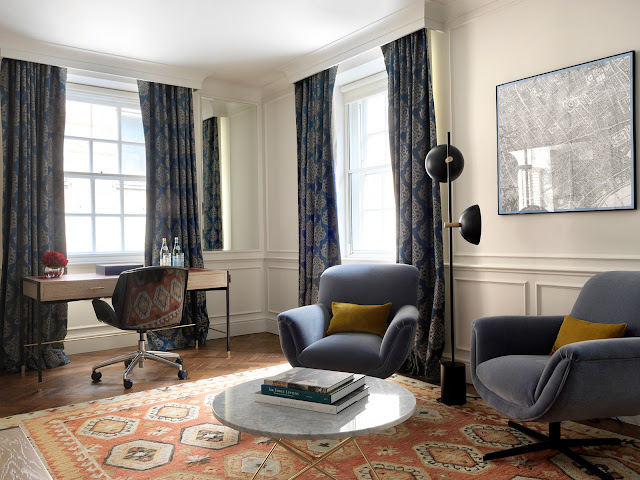


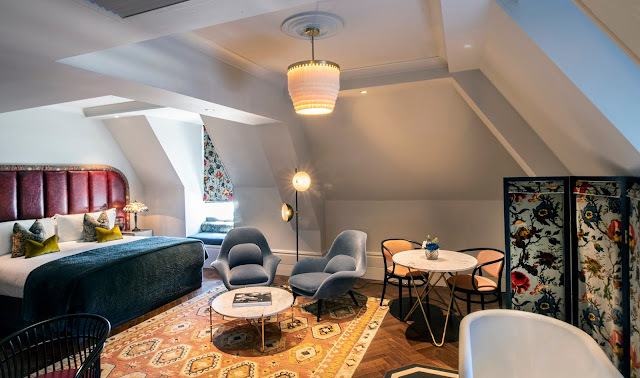





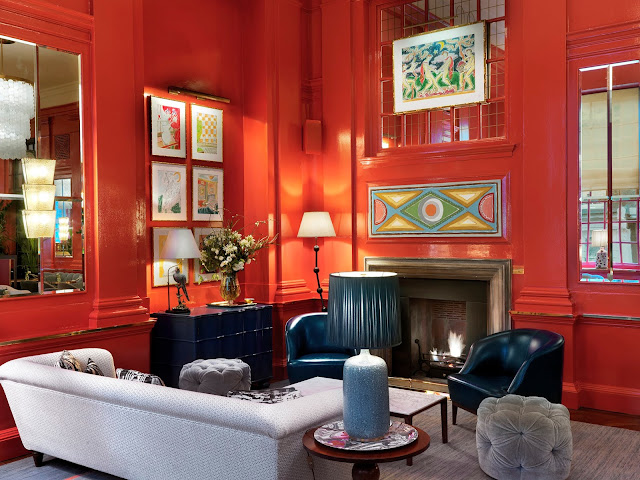















No comments:
Post a Comment